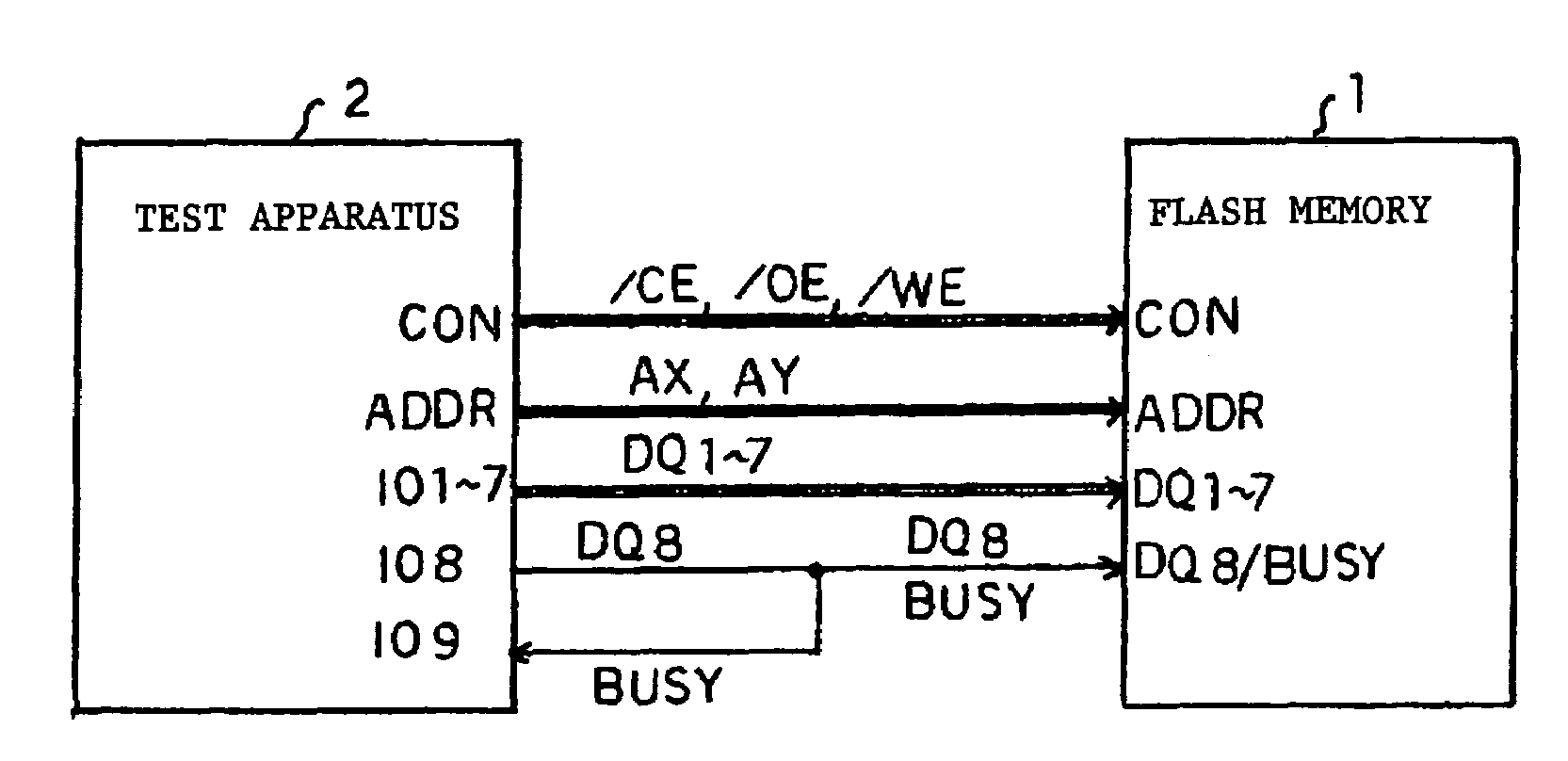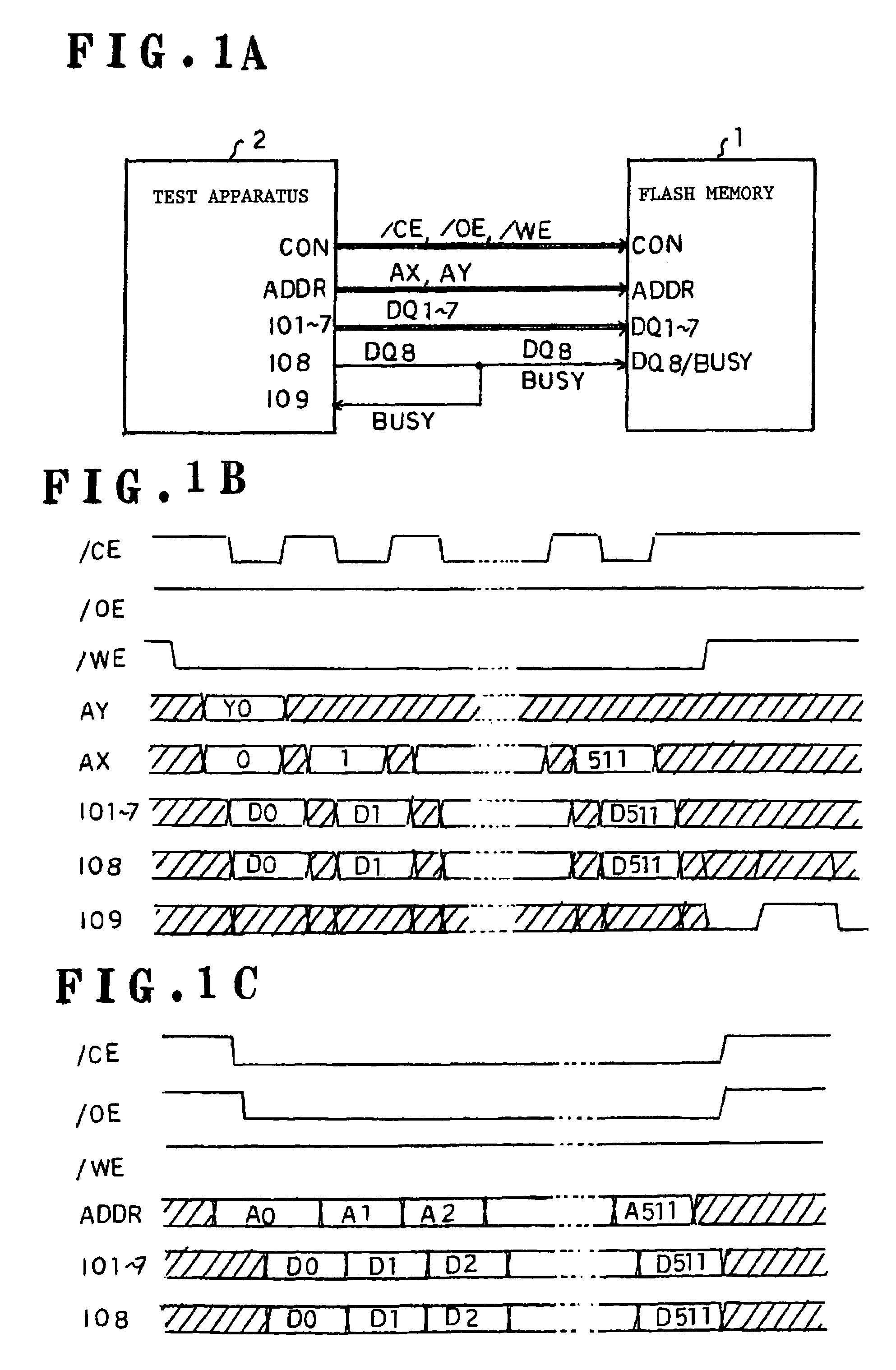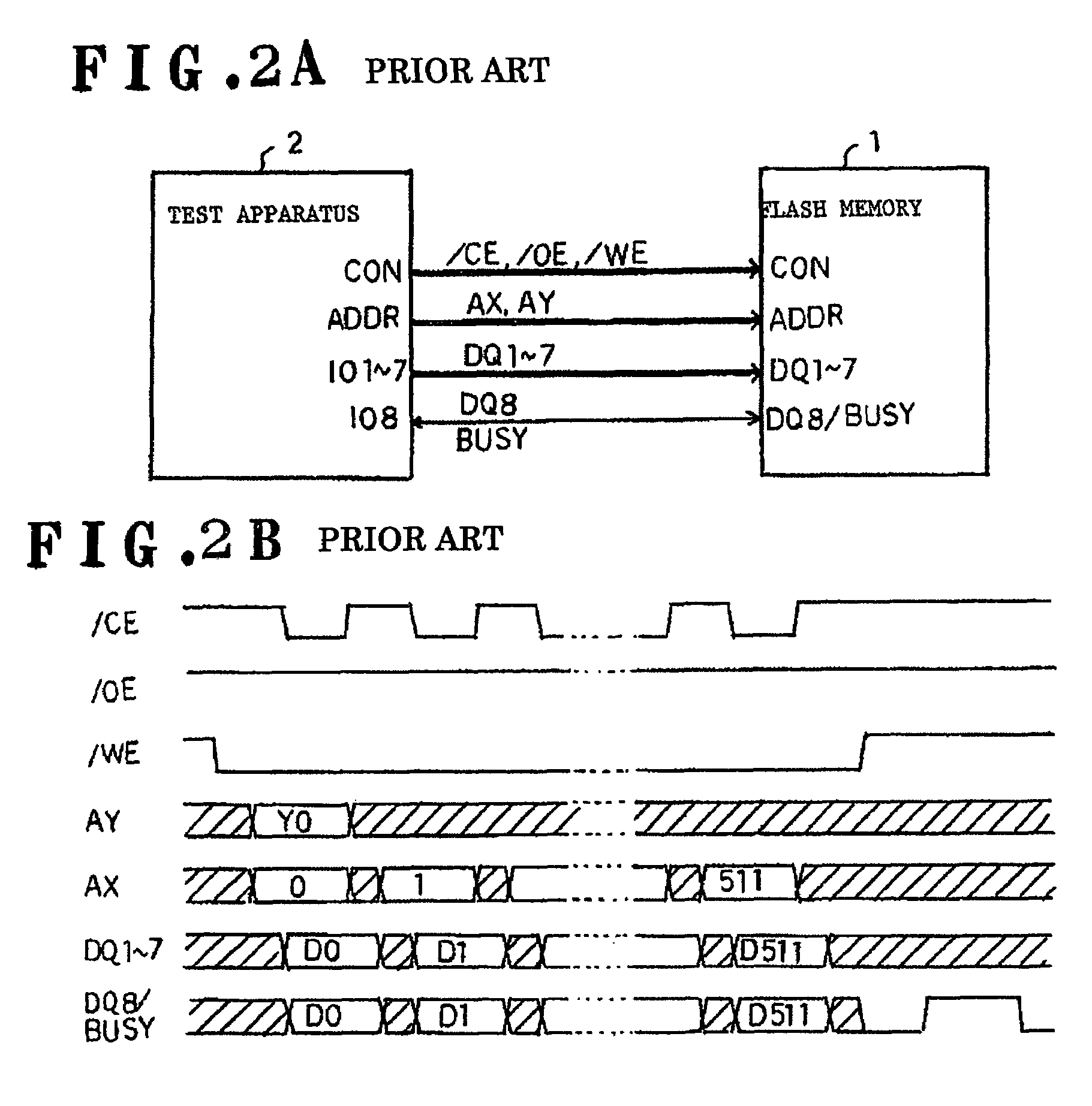Test method for nonvolatile memory
a non-volatile memory and test method technology, applied in the direction of digital storage, static storage, instruments, etc., can solve the problems of inability to perform high-speed rewriting operations, test apparatus cannot make a correct determination, and cannot perform writing operations, etc., to achieve the effect of simplifying the test program
- Summary
- Abstract
- Description
- Claims
- Application Information
AI Technical Summary
Benefits of technology
Problems solved by technology
Method used
Image
Examples
first embodiment
[0040]Referring to FIGS. 1A to 1C, there are shown a test method for a flash memory according to a first embodiment of the present invention. Specifically, FIG. 1A shows a block diagram of the test method, FIG. 1B shows a signal waveform chart during a writing test, and FIG. 1C shows a signal waveform chart during a reading test.
[0041]As shown in FIG. 1A, a flash memory 1 to be tested includes a control terminal section CON, an address terminal section ADDR, bidirectional data terminals DQ1-DQ7, and a multifunctional terminal DQ8 / BUSY. The control terminal section CON has a plurality of terminals for receiving control signals such as a chip selection signal / CE, an output control signal / OE, and a writing control signal / WE. The address terminal section ADDR has a plurality of terminals. The number of the terminals corresponds to the number of bits of address signals, which respectively designate addresses in a memory area such that whole memory area is covered by the address signal...
second embodiment
[0067]FIGS. 3A and 3B illustrate a test method for a flash memory according to a second embodiment of the present invention. Specifically, FIG. 3A is a diagram illustrating the test method, while FIG. 3B is a signal waveform chart during a writing test.
[0068]This test method employs a test apparatus 2A having two test circuits each compatible with 8 bits so that this method allows simultaneous testing of two memories each having 8 bit-width. Accordingly, this method allows testing of a flash memory 1A with 16 bits data width.
[0069]As shown in FIG. 3A, a control terminal section CON and an address terminal section ADDR of the flash memory 1A to be tested are respectively connected to those of the test apparatus 2A.
[0070]Further, data terminals DQ1-DQ7 and a data terminal DQ8 of the flash memory 1A are respectively connected to input and output terminals IO1-IO7 and an input terminal IO8 of a test circuit T1 of the test apparatus 2A. Data terminals DQ9-DQ15 of the flush memory 1A are ...
third embodiment
[0079]FIGS. 4A and 4B illustrate a test method for a flash memory according to a third embodiment of the present invention. Specifically, FIG. 4A is a diagram illustrating the test method, while FIG. 4B is a signal waveform chart during a writing test.
[0080]This test method employs a pin multiplex approach, in which reading and writing tests for the flash memory 1 are carried out at a rate equal to or faster than the maximum operating frequency available in a test operation of the test apparatus 2B.
[0081]The test apparatus 2B has two ALPGs, i.e., a main ALPG and a secondary ALPG. In a first half in each cycle, a test signal is output from the main ALGP, while in a last half of the cycle the test signal is output from the secondary ALPG.
[0082]As shown in FIG. 4A, a main control terminal CONM and a secondary control terminal CONS of the test apparatus 2B are connected to a control terminal CON of the flash memory 1 via a logical sum gate (hereinafter referred to as ‘OR’) 3a. A main ad...
PUM
 Login to View More
Login to View More Abstract
Description
Claims
Application Information
 Login to View More
Login to View More - R&D
- Intellectual Property
- Life Sciences
- Materials
- Tech Scout
- Unparalleled Data Quality
- Higher Quality Content
- 60% Fewer Hallucinations
Browse by: Latest US Patents, China's latest patents, Technical Efficacy Thesaurus, Application Domain, Technology Topic, Popular Technical Reports.
© 2025 PatSnap. All rights reserved.Legal|Privacy policy|Modern Slavery Act Transparency Statement|Sitemap|About US| Contact US: help@patsnap.com



